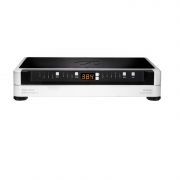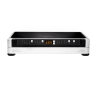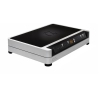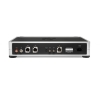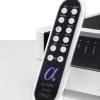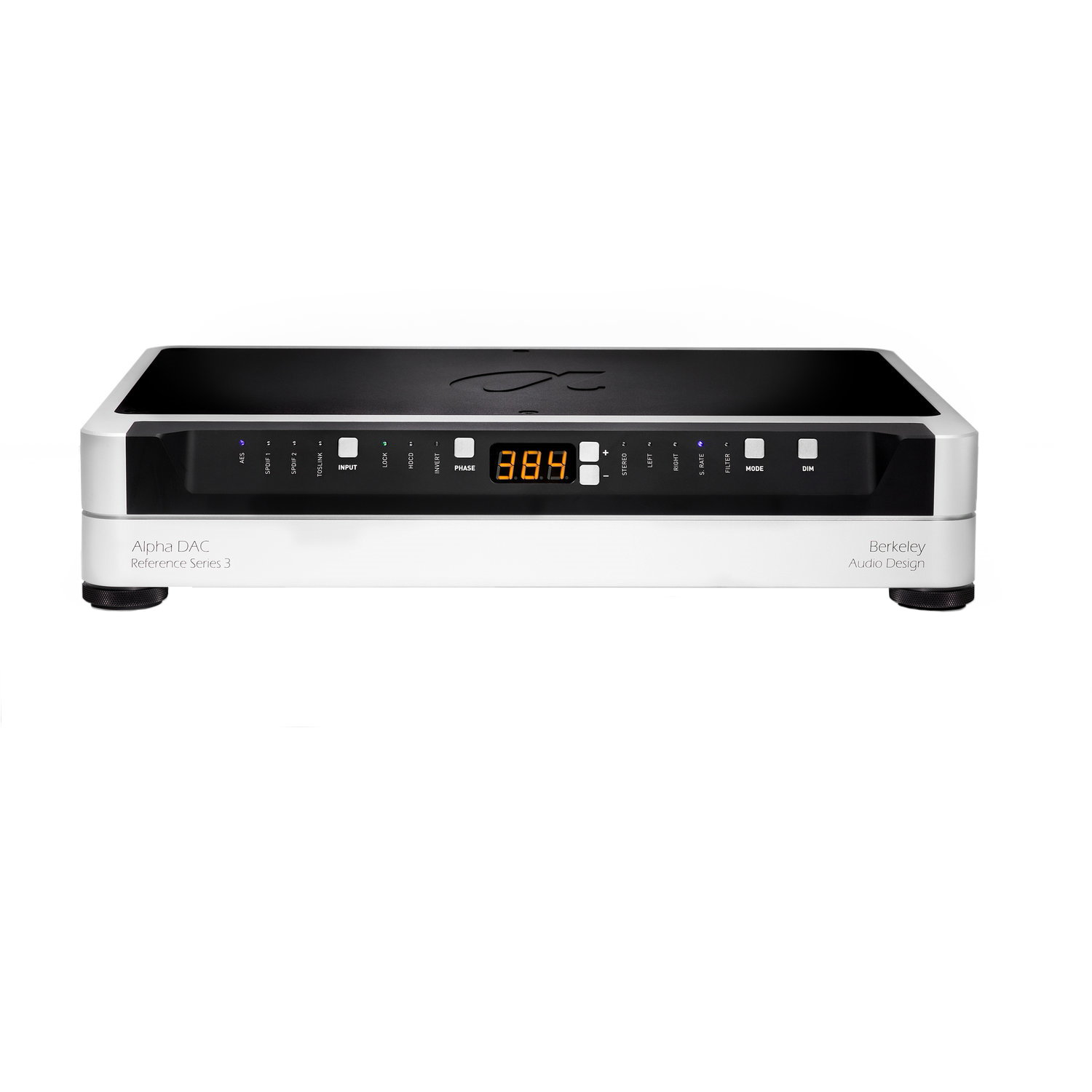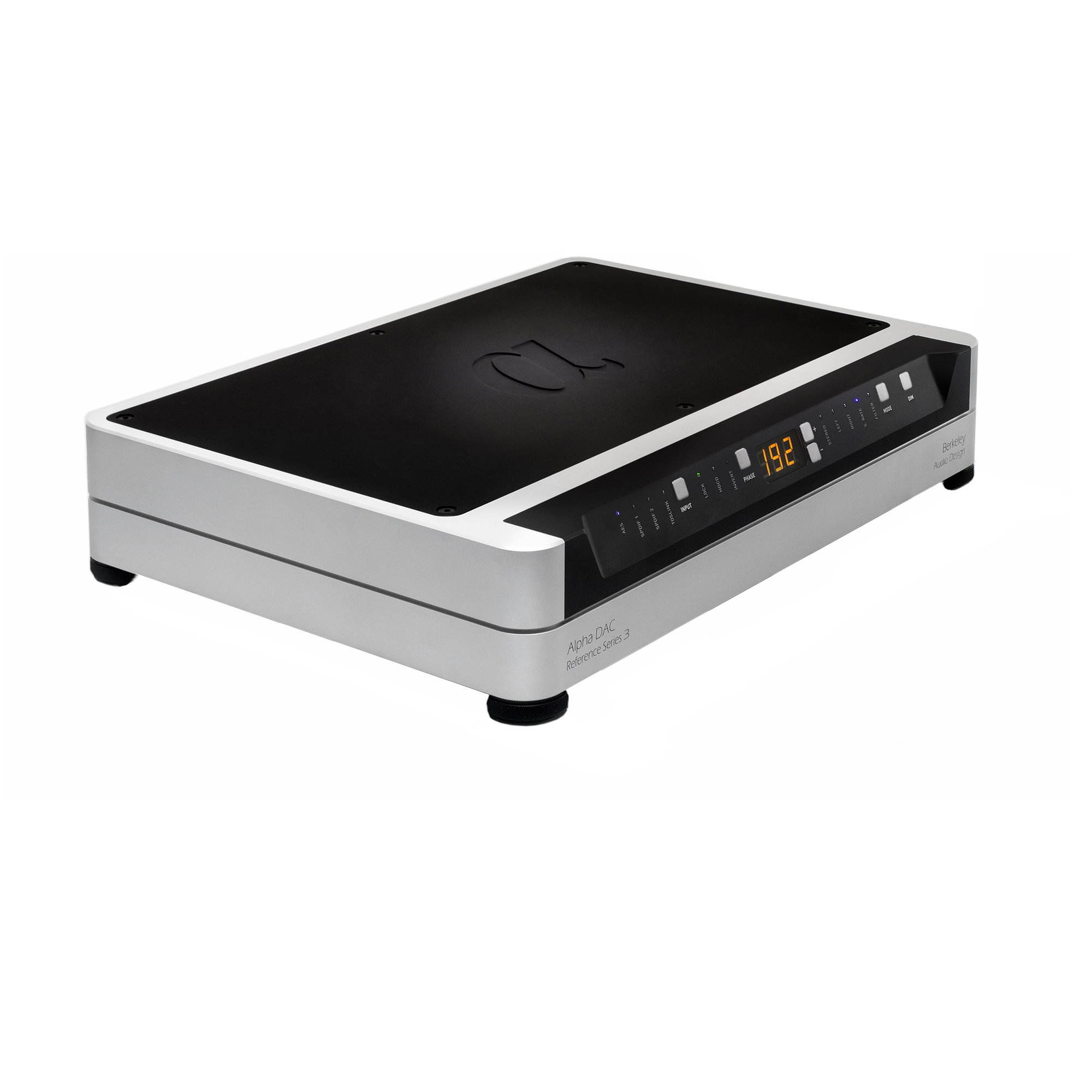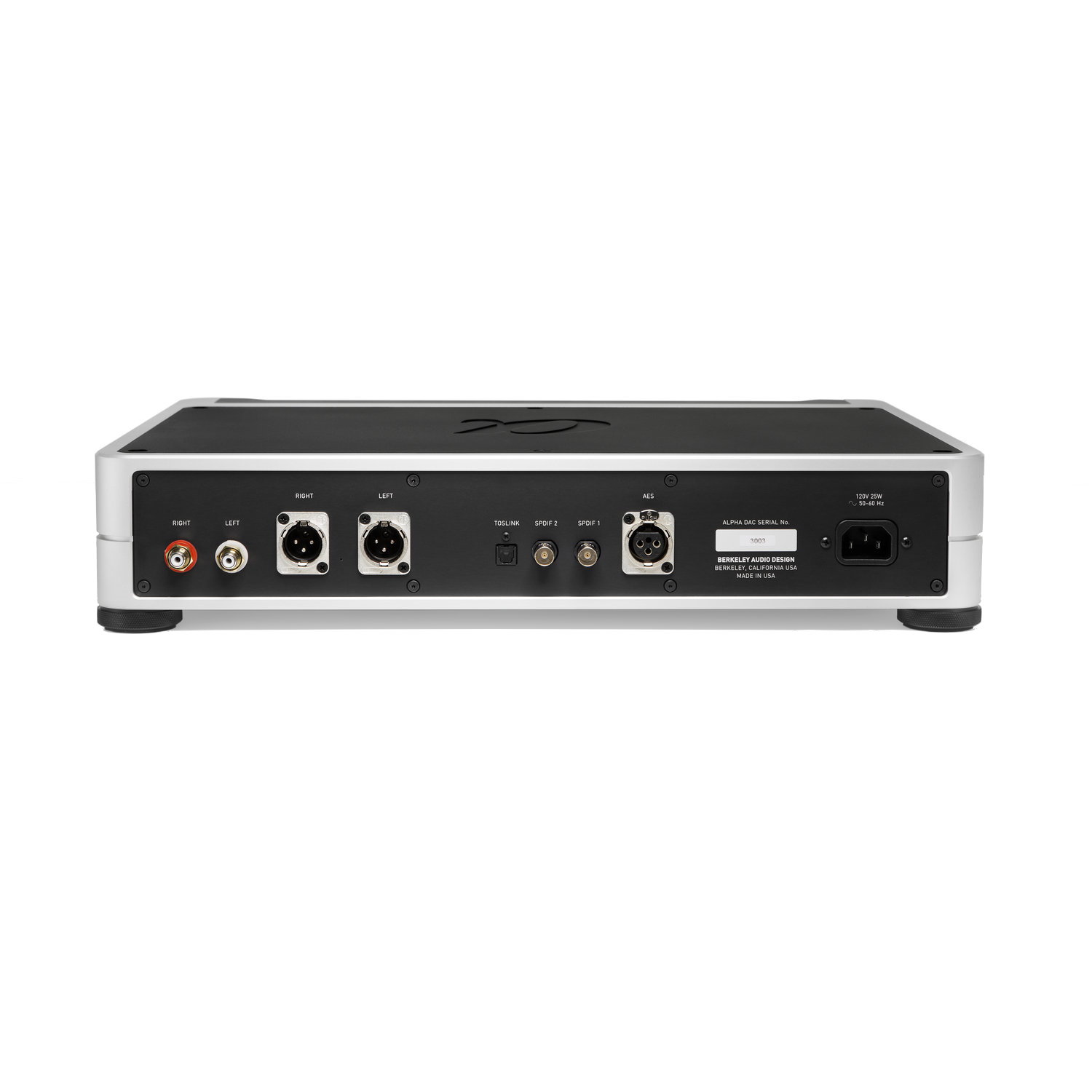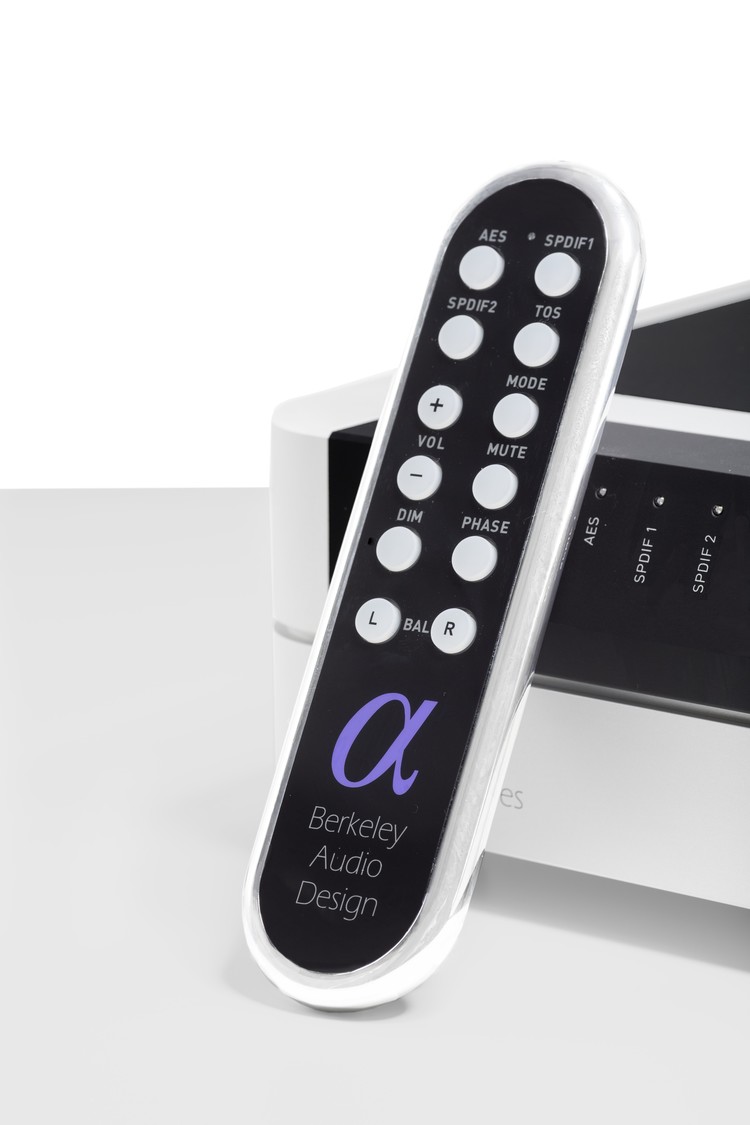- AUDIO ONE-TO-ONE Call Now: 210-805-9927
- Contact
- Register
- My Account
Berlkley Reference 3 DAC - DEMO
Berlkley Reference 3 DAC - DEMO
Not available online, please call to order.
210-805-9927
Berlkley Reference 3 DAC - DEMO
Not available online, please call to order.
210-805-9927
Description
Pristine Demo!
Call for price
MY TAKE: Stunning. No other word for it. I'm amazed every time I listen to it. Without a doubt, the Alpha DAC Reference Series 3 from Berkeley Audio is the very best sounding DAC I've heard. Paired with a good dedicated music server, the Reference will re-establish your benchmark for digital reproduction. - Galen Carol
Breakthrough DAC technology redefines digital audio Quality -• Unequaled PCM audio quality from 32kHz to 192kHz
• Unequaled MQA Rendering audio quality to 384kHz and above
• Ultra-low phase noise conversion clocking
• Ultra-low distortion variable output attenuator
• Outputs can connect directly to power amplifiers
Comments by experienced third party industry listeners after hearing the Reference Series 3: "It's like a transparent window on the microphone feed because the DAC is so transparent. The resolution of the ambient halo of air around instrumental outlines is astonishing. Even Red Book has bloom and dimensionality.""I sat down to evaluate the DAC. Two hours later, I realized I had forgotten the task at hand and was completely lost in the music, captivated by the artistry of the performances. I can give no higher compliment."
Product Highlights -
The Alpha DAC Reference Series 3 contains breakthrough technology that redefines the potential of digital audio quality. Experienced industry listeners who have heard the Alpha DAC Reference Series 3 are unanimous in their praise, saying that the Reference Series 3 clearly outperforms any other DAC they have heard, including those with six-figure retail prices, and even the much-admired DAC portion of the Pacific Microsonics Model 2 studio ADC/DAC. In addition to its unprecedented PCM audio quality, the Alpha DAC Reference Series 3 also features MQA Rendering of unequaled audio quality.
Manufacturing each Alpha DAC Reference Series 3 to its full performance potential required the development of a new hyper-accurate test and alignment procedure that is unique in the industry. This new test and alignment procedure allows extremely precise and repeatable production of the Alpha DAC Reference Series 3.
The original Alpha DAC Reference Series was a breakthrough product that reduced noise, particularly in the time domain, to levels significantly lower than any audio D to A converter previously available. The result was an immediacy and presence of music reproduction that was closer to the microphone feed than ever before. The unprecedented resolution of the original Alpha DAC Reference Series allowed and demanded further development and perfection of digital algorithms and analog circuitry that otherwise would not have been possible.
Now, the unmatched time domain resolution, low noise digital processing and highly accurate analog circuitry of the Berkeley Audio Design Alpha DAC Reference Series 3 combine to provide unprecedented audio quality with all PCM and MQA recordings.
The presence and sonic realit y of the Reference Series 3 is also made possible by tremendous electrical and mechanical noise isolation coupled with extreme time domain stability. Ceramic aerospace circuit board materials are used in all critical areas, and the enclosure is carefully engineered to minimize electrical noise and maximize mechanical and thermal stability. The Reference Series 3 weighs 30 pounds, and the entire enclosure is precision machined from solid billet 6061-T6 aluminum alloy.
A high output metal IR remote control with direct input source selection is provided with the Reference Series 3.
Careful consideration was also given to providing the highest possible fidelity reproduction of DSD files by the Alpha DAC Reference Series 3. 99+% of modern DAC’s, including the Alpha DAC Reference Series 3, use multi-bit D/A converters because they provide better performance than 1-bit converters - even DAC’s who advertise “native” DSD compatibility. So, at some point, the 1-bit DSD stream must be converted to multi-bit for all of those DAC’s.
We could, like many other manufacturers, convert 1-bit DSD to multi-bit within the Alpha DAC Reference Series 3 and show “DSD” in the front panel display. That would be the easiest approach from a marketing standpoint and would also be very simple and low in cost to implement. But that approach would also mean increasing the amount of processing in the DAC during playback which would degrade audio quality, and audio quality is the reason the Alpha DAC Reference Series 3 exists.
Virtually all reproduction of DSD files using external DAC’s is with a computer-based music server as the source. If 1-bit DSD to multi-bit conversion is done first in the computer, it can be performed with extremely high precision and superior filtering that preserves all of the content of the DSD file. Computer DSD to multi-bit conversion can be at least as good as that performed in a DAC and without adding processing noise near or in the D/A converter chip. Also, conversion of DSD to 176.4 kHz, 24 bit AIFF or WAV files can be done ahead of time using a software application such as JRiver Media Center resulting in no conversion processing occurring during playback. Another advantage of computer-based DSD to PCM conversion is that if higher performance DSD versions such as DSD 4X appear in the future, they can be easily supported with a software upgrade.REVIEWS - Series 3:
The Absolute Sound: "A hallmark of the Reference Series has always been its musically rewarding combination of high resolution and a low noise floor. The Reference DAC exquisitely reveals musical detail, but in a way that doesn’t call attention to itself. Rather, the presentation is densely textured and infused with a wealth of the finest microstructure of instrumental dynamic, timbral, and spatial cues. The Reference’s ability to reach way down to unearth the subtlest detail is partially responsible for the DAC’s astounding sense of space (if the recording contains such cues), air around instrumental outlines, the instruments within an acoustic, and the way an instrument’s dynamic envelope expands. Despite the Reference DAC’s massive resolving power, it’s as far from analytical as you can get. I attribute this to the DAC’s extremely clean rendering of midrange and treble timbres and complete lack of glare and grain. In addition, transients are sudden and powerful, but without the glassy edge that often accompanies steep attacks (particularly the initial sound of a piano’s hammers striking the strings). All this is presented against an astonishing low noise floor, which serves to unmask the fine micro-details I’ve described. With less accomplished DACs, it sounds as if a whole layer of very low-level information has gone missing. That omission renders timbres less vivid and realistic, the soundstage less spacious, image placement within the acoustic murkier, and the air around instruments and voices less tangible. No other DAC I’ve heard can match the Reference Series in these qualities. The new Series 3 builds on this foundation, taking the resolution up a notch and presenting an even greater sense of top-end air and extension, while also maintaining the sense of ease that is one of the DAC’s defining characteristics.
"The Series 3 is an upgrade over the Series 2, which is saying a lot. In resolution, noise floor, and liquidity, the improvement is minor sonically but still musically significant—the Series 2 was already the state of the art in these areas, in my view. But the Series 3’s deeper bass, wider dynamic expression, superior bottom-end articulation and textural resolution, and enhanced top-end openness are clearly major advances.
"The Series 3 extends the Alpha DAC Reference’s status as the ne plus ultra in digital decoding, and will remain at the front end of my reference system." - Robert Harley
SoundstageAustralia: "The Berkeley Audio Design Alpha DAC Reference Series 3 takes the flag for the best DAC I’ve had the pleasure of reviewing.
"... the Reference 3 romps, swings and shimmies to whatever style of music you care to play. It’s a profoundly transparent window into the music. It provides cognitive insights into the musicians’ intent in ways that no other DAC has communicated to this level (though one particular winged lion Dane would be the closest of all). It’s tonally exceptionally accurate and it is balanced in terms of not emphasising any area of the bandwidth – it’s never harsh nor shouty, not soft nor bass-bloated. And man, that resolution…
"To the truest encapsulation of the word ‘Reference’, when it comes to the Alpha DAC Reference Series 3, I can but add one succinct word to celebrate its purest meaning: Triumph." - Edgar K
The Absolute Sound: 50 Greatest Bargains in High End Audio - 2021

Berlkley Reference 3 DAC - DEMO
Not available online, please call to order.
210-805-9927
Description
Pristine Demo!
Call for price
MY TAKE: Stunning. No other word for it. I'm amazed every time I listen to it. Without a doubt, the Alpha DAC Reference Series 3 from Berkeley Audio is the very best sounding DAC I've heard. Paired with a good dedicated music server, the Reference will re-establish your benchmark for digital reproduction. - Galen Carol
Breakthrough DAC technology redefines digital audio Quality -
• Unequaled PCM audio quality from 32kHz to 192kHz
• Unequaled MQA Rendering audio quality to 384kHz and above
• Ultra-low phase noise conversion clocking
• Ultra-low distortion variable output attenuator
• Outputs can connect directly to power amplifiers
Comments by experienced third party industry listeners after hearing the Reference Series 3: "It's like a transparent window on the microphone feed because the DAC is so transparent. The resolution of the ambient halo of air around instrumental outlines is astonishing. Even Red Book has bloom and dimensionality."
"I sat down to evaluate the DAC. Two hours later, I realized I had forgotten the task at hand and was completely lost in the music, captivated by the artistry of the performances. I can give no higher compliment."
Product Highlights -
The Alpha DAC Reference Series 3 contains breakthrough technology that redefines the potential of digital audio quality. Experienced industry listeners who have heard the Alpha DAC Reference Series 3 are unanimous in their praise, saying that the Reference Series 3 clearly outperforms any other DAC they have heard, including those with six-figure retail prices, and even the much-admired DAC portion of the Pacific Microsonics Model 2 studio ADC/DAC. In addition to its unprecedented PCM audio quality, the Alpha DAC Reference Series 3 also features MQA Rendering of unequaled audio quality.
Manufacturing each Alpha DAC Reference Series 3 to its full performance potential required the development of a new hyper-accurate test and alignment procedure that is unique in the industry. This new test and alignment procedure allows extremely precise and repeatable production of the Alpha DAC Reference Series 3.
The original Alpha DAC Reference Series was a breakthrough product that reduced noise, particularly in the time domain, to levels significantly lower than any audio D to A converter previously available. The result was an immediacy and presence of music reproduction that was closer to the microphone feed than ever before. The unprecedented resolution of the original Alpha DAC Reference Series allowed and demanded further development and perfection of digital algorithms and analog circuitry that otherwise would not have been possible.
Now, the unmatched time domain resolution, low noise digital processing and highly accurate analog circuitry of the Berkeley Audio Design Alpha DAC Reference Series 3 combine to provide unprecedented audio quality with all PCM and MQA recordings.
The presence and sonic realit y of the Reference Series 3 is also made possible by tremendous electrical and mechanical noise isolation coupled with extreme time domain stability. Ceramic aerospace circuit board materials are used in all critical areas, and the enclosure is carefully engineered to minimize electrical noise and maximize mechanical and thermal stability. The Reference Series 3 weighs 30 pounds, and the entire enclosure is precision machined from solid billet 6061-T6 aluminum alloy.
A high output metal IR remote control with direct input source selection is provided with the Reference Series 3.
Careful consideration was also given to providing the highest possible fidelity reproduction of DSD files by the Alpha DAC Reference Series 3. 99+% of modern DAC’s, including the Alpha DAC Reference Series 3, use multi-bit D/A converters because they provide better performance than 1-bit converters - even DAC’s who advertise “native” DSD compatibility. So, at some point, the 1-bit DSD stream must be converted to multi-bit for all of those DAC’s.
We could, like many other manufacturers, convert 1-bit DSD to multi-bit within the Alpha DAC Reference Series 3 and show “DSD” in the front panel display. That would be the easiest approach from a marketing standpoint and would also be very simple and low in cost to implement. But that approach would also mean increasing the amount of processing in the DAC during playback which would degrade audio quality, and audio quality is the reason the Alpha DAC Reference Series 3 exists.
Virtually all reproduction of DSD files using external DAC’s is with a computer-based music server as the source. If 1-bit DSD to multi-bit conversion is done first in the computer, it can be performed with extremely high precision and superior filtering that preserves all of the content of the DSD file. Computer DSD to multi-bit conversion can be at least as good as that performed in a DAC and without adding processing noise near or in the D/A converter chip. Also, conversion of DSD to 176.4 kHz, 24 bit AIFF or WAV files can be done ahead of time using a software application such as JRiver Media Center resulting in no conversion processing occurring during playback. Another advantage of computer-based DSD to PCM conversion is that if higher performance DSD versions such as DSD 4X appear in the future, they can be easily supported with a software upgrade.
REVIEWS - Series 3:
The Absolute Sound: "A hallmark of the Reference Series has always been its musically rewarding combination of high resolution and a low noise floor. The Reference DAC exquisitely reveals musical detail, but in a way that doesn’t call attention to itself. Rather, the presentation is densely textured and infused with a wealth of the finest microstructure of instrumental dynamic, timbral, and spatial cues. The Reference’s ability to reach way down to unearth the subtlest detail is partially responsible for the DAC’s astounding sense of space (if the recording contains such cues), air around instrumental outlines, the instruments within an acoustic, and the way an instrument’s dynamic envelope expands. Despite the Reference DAC’s massive resolving power, it’s as far from analytical as you can get. I attribute this to the DAC’s extremely clean rendering of midrange and treble timbres and complete lack of glare and grain. In addition, transients are sudden and powerful, but without the glassy edge that often accompanies steep attacks (particularly the initial sound of a piano’s hammers striking the strings). All this is presented against an astonishing low noise floor, which serves to unmask the fine micro-details I’ve described. With less accomplished DACs, it sounds as if a whole layer of very low-level information has gone missing. That omission renders timbres less vivid and realistic, the soundstage less spacious, image placement within the acoustic murkier, and the air around instruments and voices less tangible. No other DAC I’ve heard can match the Reference Series in these qualities. The new Series 3 builds on this foundation, taking the resolution up a notch and presenting an even greater sense of top-end air and extension, while also maintaining the sense of ease that is one of the DAC’s defining characteristics.
"The Series 3 is an upgrade over the Series 2, which is saying a lot. In resolution, noise floor, and liquidity, the improvement is minor sonically but still musically significant—the Series 2 was already the state of the art in these areas, in my view. But the Series 3’s deeper bass, wider dynamic expression, superior bottom-end articulation and textural resolution, and enhanced top-end openness are clearly major advances.
"The Series 3 extends the Alpha DAC Reference’s status as the ne plus ultra in digital decoding, and will remain at the front end of my reference system." - Robert Harley
SoundstageAustralia: "The Berkeley Audio Design Alpha DAC Reference Series 3 takes the flag for the best DAC I’ve had the pleasure of reviewing.
"... the Reference 3 romps, swings and shimmies to whatever style of music you care to play. It’s a profoundly transparent window into the music. It provides cognitive insights into the musicians’ intent in ways that no other DAC has communicated to this level (though one particular winged lion Dane would be the closest of all). It’s tonally exceptionally accurate and it is balanced in terms of not emphasising any area of the bandwidth – it’s never harsh nor shouty, not soft nor bass-bloated. And man, that resolution…
"To the truest encapsulation of the word ‘Reference’, when it comes to the Alpha DAC Reference Series 3, I can but add one succinct word to celebrate its purest meaning: Triumph." - Edgar K
The Absolute Sound: 50 Greatest Bargains in High End Audio - 2021


